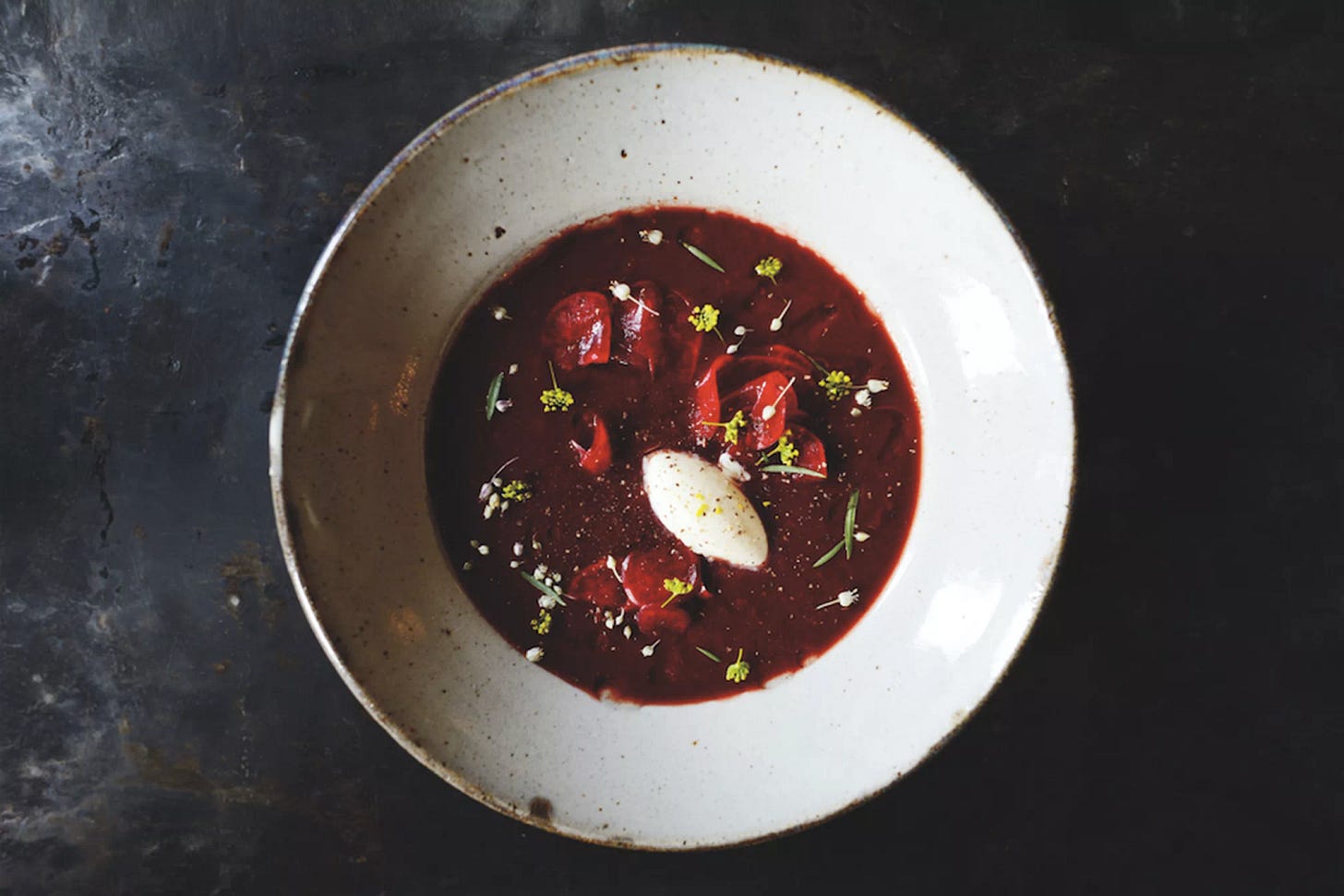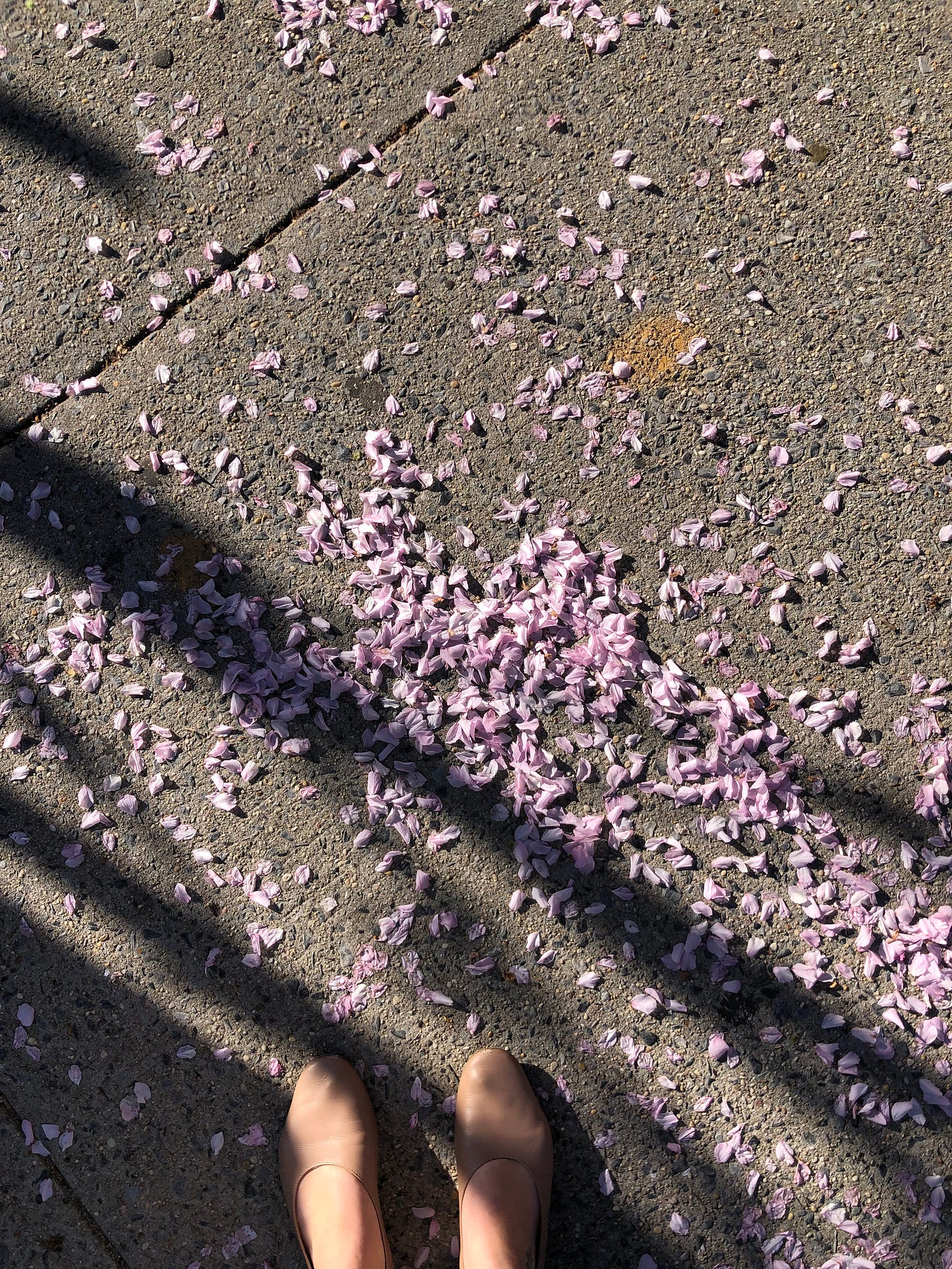Growing up on the border of Chinatown and Little Italy, the kinds of fruits and vegetables laid out at the produce stalls of Elizabeth, Mott and Mulberry Streets always served as a kind of visual indicator of the seasons.
Earlier this week I was walking through Chinatown, taking in the produce for sale. Despite some pretty warm weather, it appears as though the treasures of spring have yet to make their season debut. I’m already dreaming about the tomatoes I will eat in a few months, on thick slices of sourdough bread slathered in olive oil and Maldon salt. I am also anxiously awaiting the arrival of cherry season. Heaping piles of dark red cherries. Each one, a bite of deep sweetness.
Cherry blossom trees happen to be in full bloom across New York City — all this cherry chat and you might be tempted to think this is the homeland of the cherry. But cherries are not in fact native to North America. The cherry hails from the Caucasus, the mountainous region that lies between the Black Sea and the Caspian Sea, roughly 6,000 miles east of the Big Apple.
Here Georgia, Armenia and Azerbaijan are bordered by Russia to the north, and Turkey and Iran to the south. Over the centuries this region has belonged to a spectacularly diverse array of empires: the Roman Empire, the Sassanid Empire, the Mongol Empire, the Persian Empire, Imperial Russia, the Ottoman Empire and the Soviet Union. Its location between East and West has created a kaleidoscopic identity. There is Zoroastrianism, there is Christianity, there is Islam. Traditions here are ancient. And the consumption of cherries is one tradition that dates back to the beginning.
There’s the Georgian dish charkhlis chogi, roasted beets in a sweet-tart cherry sauce. Pilaf or plov, a national dish of Azerbaijan, can be made for various occasions with all different kinds of seasonal ingredients – including cherries. There’s the Armenian fishnah kebab, meatballs simmered in a sour cherry sauce – for which a Syrian-Jewish version also exists – but really there are many versions of all of these dishes throughout the Caucasus and Middle East.
Searching for dishes from the Caucasus on YouTube led me to the delightful channel Country Life Vlog, where you can enjoy the tranquil ASMR cooking videos of an older Azerbaijani couple, whipping up traditional dishes from scratch in their backyard. Birdsong and sounds of nature provide the background track. There are frequent shots panning to their cute animals playing in the grass.
In one video, the woman (who cooks in all the videos, but never speaks or introduces herself) picks cherries off a tree, and then preserves them in large glass jars for the winter with water and sugar. It made me think of the jars of cherries we find in shops today – typically cloyingly sweet, and really for cocktail use only. I can only imagine how wonderful it would be to spoon some of these wild cherries into a sizzling pan of lamb meatballs, or the complexity they would bring to a plov laced with hunks of spit-roasted meat, spices and nuts (if only I had a wood burning backyard stove. Or a backyard).

The use of sweet and sour flavor, like the one the cherry provides, is common in this part of the world. Dating as far back as 10th century Baghdad, we find this penchant for sweet-sour-savory flavors in cookbooks like Kitab al-Tabikh (The Book of Dishes), straight through to the 19th century with cookbooks like Georgian Cuisine and Tried Housekeeping Notes written by the Georgian feminist (and princess?) Barbare Jorjadze.
By the middle ages, the cherry’s geographic domain was expanding. In the 16th century, after tasting cherries in Flanders, Henry VIII became so enamored with the red stone fruit, he ordered cherry trees to be planted in Kent. The cherry joined the ranks of small blue and red fruits the British love to eat with lots of cream and sugar to this day (oddly reminiscent of the Union Jack now that I think of it). In Eastern Europe the cherry is everywhere: in tarts, cakes, strudels and dumplings. In sauces, jams and various preserves. There is cherry soup (like the Hungarian meggy leves) and cherry liquor (like Kirsch, from Alsace).

In the 17th century, cherries made their stateside debut when they were introduced by Europeans. The cherry turned out to grow pretty well in North American climates. By the late 19th century, the cherry was popping up in places it had never been before: in cocktails as a garnish, atop ice cream sundaes. In the 1950s hams were dressed up with pineapple medallions with bright red cherries at their center. The cherry even found its way into cough syrups, which I suppose is not entirely surprising since the amygdalin in cherry pits and stems actually acts as a natural cough suppressant. Though today there isn’t much cherry in bright red cough and cold syrup – just artificial cherry flavor.
But I’d like to think the cherry really found its New World identity in the cocktail. What would the Manhattan, the Rob Roy, the Last Word – or even the non-alcoholic Shirley Temple be without a maraschino cherry? A cherry with a glowing synthetic red hue.
The origins of the maraschino cherry can be traced back to Luxardo, an Italian distillery founded in 1821. Luxardo originally became famous for its maraschino cherry liqueur, made from Marasca cherries. But in the early 20th century they began to sell cherries candied in Marasca cherry juice – which became popular in America during Prohibition and were recreated through a recipe of brine, calcium salts, almond flavoring, red dye and American Royal Anne cherries – thus creating the maraschino cherry with which we are familiar today.
A few blocks away from my home in Red Hook, stands Dell’s Maraschino Cherries Company. It’s a family run business that was started in 1948, and by 2015 was processing a billion cherries a year, supplying chain restaurants like TGI Fridays, Checkers, and Red Lobster and making about $20 million in annual revenue. In 2015 the Dell’s Brooklyn factory was also discovered to be home to the largest indoor marijuana growing operation in New York City history.
Before the epic cherry factory/weed farm bust took place, local beekeepers in Red Hook began noticing that their bees were producing red honey. And even more alarmingly – some of the bees themselves were turning red. Neighbors near the Dikeman Street factory had noticed red syrupy runoff from Dell’s over the years and suspected the bees might be feasting on Red Dye 40 sugar water.
Investigators from the Department of Environmental Protection turned up at the factory to look for signs of runoff. As they were making their way around the building, things took a very unexpected turn. Arthur Mondella, who took over the helm of the factory after his father retired in the 1980s, locked himself in his office bathroom — and shot himself. Everyone was stunned. It was only after Mondella took his own life, that the giant 2,500 square foot marijuana growing facility was discovered beneath the maraschino cherry factory floors.
Last week I took a walk over to Dell’s. The factory sits in a nondescript building close to the water, the Statue of Liberty visible in the distance. Not much would alert you to the fact that one of the largest producers of maraschino cherries in the U.S. lies behind the gray gates. Or that it was once the site of a massive drug bust. There are a couple signs about hours of operation, one noting that the office is located around the corner on Ferris Street, and a yellow sticker with a smiley face on it that says, “Smile! You’re on camera.”
Walking up to the gates I could hear machines whirring. Thousands of cherries being chemically processed into syrupy sweet garnishes. As I walked away, my shoes stuck to the sidewalk. A thin layer of cherry syrup shining in the late afternoon sunlight.
Edible History is a reader supported newsletter. To support my work and to gain access to the full archive of posts (each month paid subscribers receive additional edible histories and recipes in their inbox) consider upgrading to become a paid subscriber.











Very interesting. We always learn interesting stories with you.
This is a great read.
The cherry you mentioned which has been used in cooking dishes (and the azerbaijan lady making lemonade kind of drink) is “sour cherries” and not regular sweet cherries. In our Turkish cuisine, sour cherries is a must 🥰👍